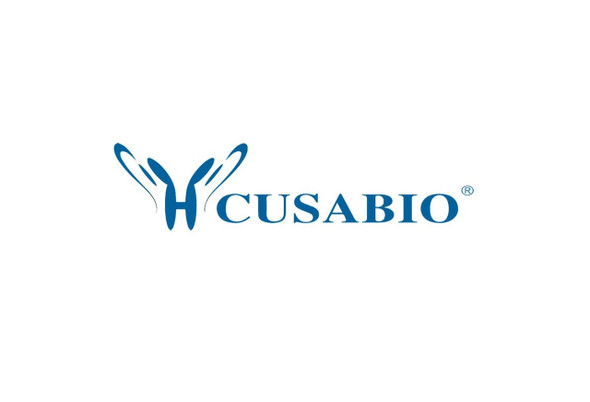Cusabio Human Recombinants
Recombinant Human C-X-C chemokine receptor type 3 (CXCR3), partial | CSB-EP006253HU1
- SKU:
- CSB-EP006253HU1
- Availability:
- 3 - 7 Working Days
Description
Recombinant Human C-X-C chemokine receptor type 3 (CXCR3), partial | CSB-EP006253HU1 | Cusabio
Alternative Name(s): CKR-L2 (G protein-coupled receptor 9) (Interferon-inducible protein 10 receptor) (IP-10 receptor) (CD_antigen: CD183) (CXC-R3) (CXCR-3) (GPR9)
Gene Names: CXCR3
Research Areas: Cardiovascular
Organism: Homo sapiens (Human)
AA Sequence: EVSDHQVLNDAEVAALLENFSSSYDYGENESDSCCTSPPCPQDFSLN
Source: E.coli
Tag Info: N-terminal 6xHis-GST-tagged
Expression Region: 4-50aa
Sequence Info: Partial
MW: 36.6 kDa
Purity: Greater than 85% as determined by SDS-PAGE.
Relevance: Isoform 1: Receptor for the C-X-C chemokine CXCL9, CXCL10 and CXCL11 and mediates the proliferation, survival and angiogenic activity of human mesangial cells through a heterotrimeric G-protein signaling pathway. Binds to CCL21. Probably promotes cell chemotaxis response.Isoform 2: Receptor for the C-X-C chemokine CXCL4 and also mediates the inhibitory activities of CXCL9, CXCL10 and CXCL11 on the proliferation, survival and angiogenic activity of human microvascular endothelial cells through a cAMP-mediated signaling pathway. Does not promote cell chemotaxis respons. Interaction with CXCL4 or CXCL10 leads to activation of the p38MAPK pathway and contributes to inhibition of angiogenesis. Overexpression in renal cancer cells down-regulates expression of the anti-apoptotic protein HMOX1 and promotes apoptosis.
Reference: "Activation of p38(MAPK) mediates the angiostatic effect of the chemokine receptor CXCR3-B." Petrai I., Rombouts K., Lasagni L., Annunziato F., Cosmi L., Romanelli R.G., Sagrinati C., Mazzinghi B., Pinzani M., Romagnani S., Romagnani P., Marra F. Int. J. Biochem. Cell Biol. 40:1764-1774(2008)
Storage: The shelf life is related to many factors, storage state, buffer ingredients, storage temperature and the stability of the protein itself. Generally, the shelf life of liquid form is 6 months at -20?/-80?. The shelf life of lyophilized form is 12 months at -20?/-80?.
Notes: Repeated freezing and thawing is not recommended. Store working aliquots at 4? for up to one week.
Function:
Involvement in disease:
Subcellular Location:
Protein Families:
Tissue Specificity:
Paythway:
Form: Liquid or Lyophilized powder
Buffer: If the delivery form is liquid, the default storage buffer is Tris/PBS-based buffer, 5%-50% glycerol. If the delivery form is lyophilized powder, the buffer before lyophilization is Tris/PBS-based buffer, 6% Trehalose, pH 8.0.
Reconstitution: We recommend that this vial be briefly centrifuged prior to opening to bring the contents to the bottom. Please reconstitute protein in deionized sterile water to a concentration of 0.1-1.0 mg/mL.We recommend to add 5-50% of glycerol (final concentration) and aliquot for long-term storage at -20?/-80?. Our default final concentration of glycerol is 50%. Customers could use it as reference.
Uniprot ID: P49682
HGNC Database Link: N/A
UniGene Database Link: N/A
KEGG Database Link: N/A
STRING Database Link: N/A
OMIM Database Link: N/A






